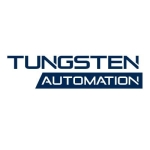What is our primary use case?
We're a value-added distributor for HelpSystems Automate. We distribute Automate along with other solutions to various customers. Each customer has a different use case. Usually, we develop a proof of concept solution for them or the whole project for them.
We've done multiple projects. We've done projects for hospitals for insurance eligibility checking. We've done HR automation. We've done price comparisons for various vendors where they want to know how their competitors are pricing the same products.
For the insurance eligibility checking that we have done for a hospital chain in the region, the requirement was that they have thousands of patients coming in every day, and they need to know the insurance these patients have and what's covered under the insurance for them. So, the front desk employee takes a person's ID and enters the identification number from the ID. After that, the bot that we've developed picks up that ID from the backend, goes into the insurance portal, searches for that particular ID, and then finds out if they're eligible or not. If they're eligible, it finds out what's their copay, what's their coverage, what's their network, etc. This is the process that we developed for a hospital chain in the region.
How has it helped my organization?
For no-code automation specifically, it's very good. It's all just drag and drop, so as a developer, you don't see any underlying code that's there. It's very friendly in that regard. You don't need to have someone who is extremely technical or proficient to start developing solutions with Automate, which is huge. However, you do have to work on integration. For example, if you want to integrate a PowerShell script into your workflow, there are actions for that. If you are a proficient developer who wants to use more traditional coding languages, you can still integrate that with your regular workflow. It's very useful for clients who don't want to dedicate too many technical resources to develop and automate. Some of our clients have regular IT staff. Even though they're in IT, they're not doing much coding per se. They're able to automate pretty well and pretty quickly with Automate. They can easily start developing and working with it, which is a big selling point. We also have clients who are more used to having traditional scripting languages and are less willing to try out Automate. So, it varies on a case-by-case basis, but in the vast majority of cases, having no code is a huge factor.
It's pretty good at reducing human errors. Whatever you set up, it does that logically. If any errors come through, it's almost always because of some gaps in the implementation logic, which can be tricky to catch. That's where the bulk of the errors come from. There might be some edge cases that you didn't consider while developing, which might cause some errors. That's quite possible, but if you set it up right, it works pretty well. The other area of errors would be if you're incorporating OCR or something like that. There's inherently some ambiguity in that. It can read some letters differently. There's a possibility for errors to come in there as well. However, based on what I've seen, at least for the insurance eligibility process, there is about 90% to 95% accuracy. In the vast majority of cases, it's pretty accurate.
What is most valuable?
It's very easy to use. That's a big selling point for it. It has got a drag-and-drop interface, so you can quickly deploy bots.
The implementation time is pretty quick, which is another big selling point. The web browser of Automate is pretty good as well. If you want to do any web scraping or log into a website and pick up information, it's pretty easy to set that up. These are some good features of it.
What needs improvement?
Error messages should be better. For error status, there should be better documentation because a lot of times, error messages that you get are quite vague. For example, you get a message saying that the workflow has run into an unknown status, which is vague. It just tells you that it failed, but you don't know how or why it failed. It makes debugging difficult. From a developer's perspective, it gets a little difficult to debug at times due to these error messages. It's not with all the errors, but for quite a few errors, the documentation is vague.
Event logging and failure notifications could be improved because you can set up logging for each individual step, but you have to go and manually add it to each step or task. The same issue is there with the failure notification. You can set up an action so that when a task fails, you can take a screenshot and send an email notification, but you have to go into the task and build a condition for that. It would be better if event logging and error failure notifications can be done at a global level without having to go inside the code and add it for every single task.
Its stability could be improved a little bit, and it could also have a few more third-party integrations. Currently, you can integrate with almost any third-party service. You can integrate either through the API or through the GUI, but it would be nice if there were native actions built into Automate. It already has a lot of integrations. For example, we have Microsoft Dynamics, SharePoint, etc. We do have a fair bit of third-party integrations, but it would be nice to have a few more software integrations.
There is a community portal, but it's not particularly active. It's not a very big community. If you run into an error, you can't just look it up on Stack Overflow or something like that. However, the tech support from the vendor side has been excellent, so it isn't a big issue.
Buyer's Guide
Automate
October 2025
Learn what your peers think about Automate. Get advice and tips from experienced pros sharing their opinions. Updated: October 2025.
872,778 professionals have used our research since 2012.
For how long have I used the solution?
I've been using it for a year and two months.
What do I think about the stability of the solution?
Its stability can be better. It's not a very big concern, but once in a while, you lose connection to the main central server for Automate from the developer console. If your developer console loses connection to the main console, which is not a very frequent occurrence, you don't realize it until later. So, you're saving your task thinking it's working fine, but it's not being saved on the server. You lose a little bit of data once in a while, but these are not very frequent occurrences. It happens once in a while, but it's something to be careful about. There are also occasional crashes. Sometimes it slows down, and it crashes. I'd rate it an eight out of ten in terms of stability.
What do I think about the scalability of the solution?
It's a very scalable solution. We have an unlimited bot version as well, so we can deploy multiple agents. We can have load balancing across these agents. We can set up agent groups as well. We can have an agent group running a certain task, and we can have a load balancer to distribute that task across agents. We have failover support and high availability support. So, it's a very scalable solution.
It's usually deployed in one location. I don't have much experience with clients deploying in multiple locations. I've only seen them use multiple servers, but they're all local servers. It's only supported for Windows, so there's no Mac or Linux support.
We've done implementations for enterprise-level customers to small and medium-sized customers. Its biggest selling point is that small and medium customers usually find solutions like UiPath and Blue Prism far too expensive. They find Automate's pricing much more competitive.
How are customer service and support?
Their support is excellent. You can raise a support ticket, and within four hours, you'll have a response. Because we're a distributor, we also have direct email access to a few of their technical support team members based out of Europe. They're also pretty responsive. Usually, they help us out with almost any issues that we run into. So, their support is excellent. I'd rate them a nine out of ten.
How would you rate customer service and support?
How was the initial setup?
It's agnostic. It can work on the cloud or on-prem. Some customers want it on-prem, and some customers want it on the cloud. It doesn't make much of a difference from Automate's perspective. It's the same software, and where you deploy it doesn't make much of a difference. We have integration with AWS and Azure.
I work in development, so I am involved in deployment for clients. It's pretty straightforward. You just install it and set it up. There are some prerequisites where you have to open a few ports and do things like that. Overall, it's straightforward. You can do it in maybe an hour.
After you have it up and running, you can just start working on it. You have a developer console, and as soon as it's set up, you can start developing and deploying from there. A simple, basic task such as reading an email, taking a file, and moving it to a folder can be developed in two hours.
In terms of the ease of setting up and deploying the attended or unattended bots, we don't do much differentiation between attended and unattended bots. They're the same thing for the most part. It's just about how you'd set up the workflow. If you are setting up an attended workflow, for example, you'd have some actions in the workflow saying that wait for a user's input or something like that. For unattended, it's going to be completely end-to-end. We don't make much differentiation in that case. The pricing is the same, and it's pretty easy to deploy them after you've developed them.
What about the implementation team?
For deployment, it's just me for the most part. It's pretty straightforward.
In terms of maintenance, we offer two pricing models. We offer subscription models where you just pay an annual cost every year, and there's also a perpetual model where you pay some amount initially, and then every year, you pay the annual maintenance cost.
What was our ROI?
We see that there's usually a very quick ROI on it after implementation. It's pretty easy to develop, which means you can get solutions out pretty quickly. At times, you have to maintain certain parts of it, but that's expected. What I've seen is that after implementing it, organizations usually see a quick return on the initial investment they have made. There is going to be a maintenance cost for it to ensure that it keeps running, but that's fair.
What's my experience with pricing, setup cost, and licensing?
From a distributor's side, one of the biggest selling points is its price point. Without going into any numbers, compared to UiPath, Automation Anywhere, and Blue Prism, we're significantly cheaper. The main difference is that other competitors usually charge you per process. However, in Automate's case, it's priced per bot. So, a bot can run multiple processes at the same time, but you are only priced for a single bot. That's a big selling point. It isn't like most of the competitors where if you're running three processes on a single bot, they would be charging you for three processes. We're also the only vendor to offer an unlimited option where you can have unlimited bots, and each bot can do an unlimited number of tasks. Price-wise, we're very competitive.
What other advice do I have?
I'd definitely recommend it. It's a very good product. It's a very affordable product, especially if you're a small or medium-sized organization. My biggest suggestion is to invest internally in your organization so that your employees can build and develop their own bots for their use cases. That's the biggest thing that customers who are looking to buy Automate can do. It's very easy to use and very easy to pick up. It's unlike most of the competitors where you need to have a highly certified individual to develop. So, invest in your people or employees who are doing the day-to-day work because they know what they can automate and what they cannot automate. Embrace automation fully and not just as a small part of your organization.
It's pretty easy to automate any manual tasks that are currently repetitive. So, you can see a very quick return on investment with Automate. I also advise companies that are planning on doing automation to also invest in maintaining and scaling it. Don't just be satisfied with automating a single process, but take it further and set up an automation center of excellence and also look at other departments, such as HR and finance, that can use automation. It doesn't have to be just in IT. You can do this for almost any business flow that you have. You need to embrace it and invest in it more than just having a consultant come in and do one project and leave. You don't need to have too many technical or certified people to start working. It's very easy to use compared to other competitors' solutions.
In terms of training required to use Automate, HelpSystems offers Automate Academy on its website. It's free of cost, and anyone can access it. It has got multiple modules and hours of videos going over from the very basic concepts to more advanced concepts of Automate, including workflows and other more technical features. You can go through that, and you can also get certified through it. Those resources are freely available. Any of our customers can use them. That's one place where you can get support for training. There's also something called Bot Store, which is provided by HelpSystems. You can just go there and download prebuilt bots, and you can freely modify them, edit them, and use them for your use case. They are also mostly free. When you combine both of these, there is a fair bit of support for the developers for training. In terms of the amount of training required, it varies on a case-by-case basis. Some people learn it faster, and some people learn it slower. It also depends on your technical background. For example, they still have the concepts of loops and if statements. Even though it's drag-and-drop, you still need to know those concepts to develop with Automate. You need to have that kind of algorithm thinking. If you come from a development background, it's very easy to pick up and use. With a couple of hours of training and just playing around with it, you should be good to go, and of course, there are all the resources from the vendor side to fill in many gaps.
There is the Recorder feature in Automate, but I don't personally use it that much because anything that you can do with the Recorder feature can be done with the regular drag-and-drop actions. Recorder doesn't make it a lot easier to use than it already is.
Overall, I'd rate Automate a nine out of ten.
Disclosure: PeerSpot contacted the reviewer to collect the review and to validate authenticity. The reviewer was referred by the vendor, but the review is not subject to editing or approval by the vendor. The reviewer's company has a business relationship with this vendor other than being a customer: Distributor












